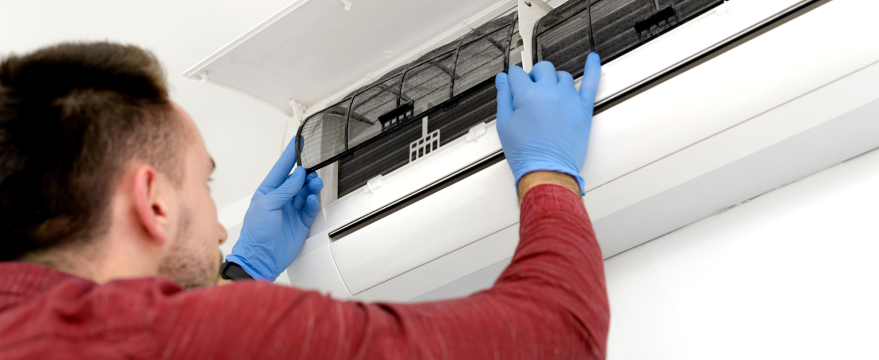Your property inspection checklist
Are inspections before you purchase a property really needed? Well, imagine moving into your new home and then finding out two months down the track that portions of the electrical system are not compliant, you have serious water leaks and a major borer problem? Enough said.
If you are considering buying a new property, use this checklist for your own inspection before engaging a professional inspector. This might help you rule out a property before going too far through the purchase process:
Is the house insulated?
Do you see any leaks, water stains or suspicious new paint anywhere?
Do you see any cracks or bulges on walls (could be due to subsidence, moisture or condensation)?
Is there sufficient natural light in the house?
Is noise control within the house adequate?
Are the hot water cylinder and header tank securely fastened?
Are there any water pressure/plumbing problems (check by turning on several taps at once)?
Also, turn on the shower to make sure it has good pressure and is hot.
If the property is connected to gas, are gas pipes working properly (turn on several outlets at once and make sure the flame is strong and high)?
Do all fans and rangehoods vent to the outside?
Are all windows and doorframes in good condition?
Do any of the windows stick?
Do all doors close properly?
Is there any mould in wardrobes, cupboards or bathrooms?
Are toilets and cisterns in good condition?
Are there any signs of damp?
Are there any signs of borer?
Get on the roof and check for any signs of rust or cracked tiles.
Do the gutters show any signs of rust or cracking?
Are metal flashings over windows and doors rusted?
Is there rust or staining on the exterior walls?
If it is a property with a plaster finish, are there any cracks in the plaster, in particular around windows, doors and corners?
Is there any dampness around windows and doors?
Go under the house and check the piles. Are there any missing piles or any that are no longer supporting the house?
Are the piles solid or is there any sign of rot?
Look for any floor problems that may be hidden from above.
Check for gaps in the flooring, dampness and borer.
Are the fences in good condition?
Other considerations:
Are there any protection orders over trees or buildings on the property?
What is the zoning for that property, as well as adjoining properties?
Is a LIM report available?
Is there, or has there been, a claim to the Weathertight Homes Resolution Service?
What is the government rating valuation for the property?
Have all building consents been obtained?
How much are the rates?
If the property has been rewired recently, is there an electrician’s Certificate of Compliance?
Is the property likely to flood in heavy rain?
Even if you are satisfied after completing your own inspection, it is still advisable to hire the services of an expert and independent building inspector to evaluate the structure of the house and provide feedback about other systems such as the roof, plumbing, electrical system, heating/air conditioning units, insulation, doors, windows and more. Some people do have a friend or family member who can perform an inspection, but make sure they have the required expertise to do a thorough evaluation of the property.

Home Inspection Red Flags to Watch Out For When Buying A Home
Buying a home is an exciting process, but many homebuyers are also understandably nervous. Buying a home is a big investment you’re going to have for years. That’s why it’s important to watch out for home inspection red flags that signal big problems. Some slight problems or minor defects are fixable with a bit of TLC, but some issues can seriously detract from your investment, and even endanger your health and safety.
Structural Problems
Structural problems top the list of home inspection red flags. Structural problems, like a cracked foundation or damaged load-bearing walls, affect the integrity of the entire home and signs of these problems should be taken seriously. When selling a house that needs work, some home sellers might not know about structural problems or they might not disclose them, so you may have to detect these yourself. A home inspector will include structural damages in their report, but you can find signs before you get to the inspection stage. Looks for these issues which may indicate structural problems.
Cracks in the basement floor larger than ⅓ inch
Bumps in the basement floor
Misaligned door frames or windows
Misaligned porch or front steps
Walls have been removed
Grading
The grade or slope of the surrounding property affects the way water drains during storms or snowmelt. This subtle feature can be a big home inspection red flag if it’s not done properly.If the property slopes towards the home, even at a slight angle, it will cause water to pool in or around the home, perhaps in the basement or around the foundation. If the property slopes away from the home, but the yard forms a valley where water pools, this can also cause flooding and water problems. When studying the grade, look for the following home inspection red flags:
The surrounding yard is completely flat
Patches of dead grass, moist areas or puddles
Property slopes toward the home
Moist areas close to the home
Mold
Mold is often a problem if you’re buying a fixer-upper. Sometimes mold results from neglect and it can simply be cleaned up, but other times it can be a serious home inspection red flag. The major deciding factors are the extent of the problem and the cause of the mold. If mold has occurred due to a lack of cleaning and it’s isolated to small areas, the problem may be easily resolved. However, if the mold occurs due to a lack of ventilation or accumulating moisture, the mold will simply come back if you clean it, and you’ll have to fix the cause to stop the mold. This might mean replacing drafty windows, or it might mean redoing the entire attic, roof, or bathroom to ventilate the area or stop a leak. Watch out of these mold-related home inspection red flags to detect really problematic mold issues.
Large patches of black mold anywhere in the house
A noticeable mold odor
Bathrooms without fans or windows
Large areas of patchy paint
Old Wiring
Faulty electrical wiring can make it difficult to run modern appliances, and it is a leading cause of home fires, which makes it a serious home inspection red flag. Electrical wiring is also difficult to fix, making it easy to lose money on this home renovation. Homes constructed before 1930 may use dated wiring methods like knob-and-tube wiring, which can limit power output and even cause electrical fires. These wiring systems are often complex and disorganized, making future renovations difficult and expensive. They can even cause home insurance providers to refuse coverage due to the increased fire risk. If the home was constructed before 1930, ask about electrical updates or ask your home inspector if they can determine the type of wiring used. You can also look for the following home inspection red flags yourself:
Flickering lights
Outlet faceplates are hot to the touch
Outlets aren’t grounded
Certain appliances won’t work or won’t work properly
Certain appliances can’t run together

How real estate agents can ensure safe home inspections during the COVID-19 crisis
how things have changed! Living and working in this pandemic era has brought many challenges to the real estate industry. Agents have all had to turn to a highly digitized office to move transactions forward. Zoom meetings, FaceTime, virtual tours, DocuSign and the ever-present email attachments now fill your workday at home
However, despite the many technical advances that home inspectors embrace, it is still largely an analog procedure of actually touching and manipulating the physical structure of the home. The value of our work is to discover the defects of the various systems and components that help define the quality of a house. These discoveries cannot be found without being on site.
Are there social distancing strategies that can make this process safer? Some have proposed agents doing live video tours of the home while the inspector makes notes for their report. An adjunct to this plan is to have the inspector visit later to open and inspect the utility systems in detail. Unfortunately, this defies quarantine guidelines because now two people need to enter the home. Also, how many agents are going to climb onto a roof or into a crawl space to view these critical areas? Not many, I think
There is also a proposal where the seller performs the video tour. This is an obvious conflict of interest because they can easily avoid known defects and may lack the motivation to visit dangerous locations such as the roof and crawl space. Under this scenario, the disclaimers in the report would likely outnumber the found defects. This also reduces the value of the report, and thus, the fee for the inspector. This will not be received well among my colleagues.
However, there is some middle ground. The International Association of Certified Home Inspectors has developed a training course for inspectors titled, “COVID-19 Safety Guidelines for Home Inspectors and Contractors” which will allow them to become certified in the protocols needed to improve services amid this emergency lockdown. In essence, the training calls for observing the same precautions we’ve come to use in our daily lives
Here are a few details proscribed in the training:
Personal and wardrobe hygiene
Disinfecting tool kit
Personal protective equipment, such as masks, gloves and shoe coverings
Touching as little as possible
Alcohol wipes for cleaning control surfaces
Digital payment and documents

Home Inspection Precautions COVID-19
Here are some of the precautionary steps we are taking to minimize risk for our clients, agents, and property owners:
[UPDATED March 26, 2020] I have completed the International Association of Certified Home Inspectors’ (InterNACHI) COVID-19 Safety Guidelines for Home Inspectors Course and will adhere to their recommended safety guidelines and standards. View certificate of completion.
I have Supra key access, so for homes secured on a Supra, the agent does not need to be present to grant access.
[UPDATED March 24, 2020] Although I encourage home buyers to be present for part (or all) of the inspection to meet face-to-face and walk through the property with me, at this time and following the recommendations of both InterNACHI and the CDC, we will be conducting virtual meetings with clients and agents until further notice. I always have been and will continue to be available for phone calls with clients to discuss findings, and I can also live-chat with them via video either at the home and/or after issuing my written report.
I take all necessary precautions when it comes to protecting the inspection property. This includes wearing shoe covers inside the home and gloves/additional PPE gear when necessary.
I practice regular hand washing or use alcohol-based hand rubs when a washing station is unavailable. I always wash my hands when they are visibly soiled during an inspection and after removing any PPE.
The inspection agreement is delivered to clients via email and they can easily submit their assent via electronic signature. Likewise, payments can be handled conveniently and securely as well via our online payment system.
Inspection reports are delivered to clients electronically via email link.
In all seriousness, home inspection is a fairly solitary process. Even before now, I quite often complete inspections completely on my own without direct contact with other people. If clients, agents or home owners are on-site during an inspection, I am respecting social distancing recommendations including maintaining a minimum distance of 6 feet from others and avoiding handshakes (which is particularly difficult for me! I’m a handshake kind of guy.) I am making every effort to protect YOUR health and am also taking precautions to protect those I love as well.
Tips for a Clean and Sanitized Home
As home inspectors, we are often privy to some of the more unseemly (and sometimes downright disgusting) areas of a home. We’re not just talking about disorganization. Yes, clutter has its own disadvantages, but even the most tidy homes can harbor unwanted germs. Here are a few simple strategies to keep your home as germ-free as possible
Home Air Filters
We’ve received quite a few inquiries lately about how often the air filter(s) should be changed out in a home. Clean air filters save energy and money. Routinely changing or cleaning the filters from your home’s heating and air conditioning system helps the units run more efficiently and enjoy a longer lifespan. In addition
“Filters help to keep dust from building up in your ducts, or being blown into other rooms of your house. In recent years, this air cleaning function has become more important to homeowners, and manufacturers have designed filters that use your heating and air system to remove microscopic particles like dust, pollen, pet dander, bacteria, plant and mold spores, and even smoke from the air in your home.”
Air filters – How often you change out your home air filters depend on a number of factors, including:
Type of filter
Overall indoor air quality
Number of pets in the home
Number of people in the home
Amount of exterior air pollution and/or construction around the home
Essential Property Buying Tips Before, During and Following Inspections
Prepare a Non Negotiable List
Getting to wander through gorgeous homes all day when buying a home is very exciting. However, it’s essential to not let the excitement cloud your judgement. It’s a practical idea to make a list of the must-have property features before open house inspections. A disciplined property buyer will check items off their list while you are at the open home to keep you on track.
Stay Focused on the Must Have’s
Things such as off-street parking, storage space, an extra bathroom, outdoor spaces, a garden shed; are all things you put on your list for a reason, knowing the lifestyle you currently have. Deciding ‘oh we’ll work it out’, because you got dazzled by the cute cottage with terrible local resident parking options, will be a real pain as you do laps of your own house late on a rainy night looking for a park.
Take Photos At the House Inspection
Once you arrive at the open home, ask for a floor plan from the real estate agent and take detailed notes as you inspect the property. You only need to see 3 or 4 properties before you start to forget which one had the ensuite and whether you even saw the laundry in that other one. Take some photos if you need to, to supplement the ones online, but also photos that correlate with your notes. Open doors, cupboards and windows. Check for touch up painting to hide cracks in a wall or ceilings. Be aware of how close earth is to floorboards, water drainage outside and stand in one spot to see if there is a damp smell.
Location, Location. Location
An open home inspection for property buyers really begins as your drive past the property once it is listed for sale. Take in what’s in the local area, what the traffic is like and how well maintained the streetscapes are. Look for warning signs such as overgrown nature strips, graffiti on fences or empty shops in the local shopping precinct. Once you have parked, check out the aspect of the property and where the sun is in relation to the house’s orientation. Depending on your location in Australia, the amount of sunlight the house gets can have a significant impact, not only on your lifestyle but your energy bills too. You want to get the most light possible in the winter months and have options to keep the property cool through the summer.
External Physical Inspection
As you approach the property, look at the external surfaces. Ideally the vendors have cleaned up and prepared the house for sale but there are always exceptions. Does it need repainting? Are the gutters and external drainage pipes in good condition or rusty? Are balconies well maintained?